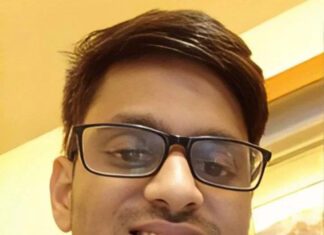Frank Vasquez is the author of Mastering Embedded Linux Programming – Third Edition, we got the chance to sit down with him and find out more about his experience of writing with Packt.
Q: What is/are your specialist tech area(s)?
Frank: Embedded Linux, IoT, blockchain.
Q: How did you become an author for Packt? Tell us about your journey. What was your motivation for writing this book?
Frank: I was approached by a Content Marketing Editor from Packt on LinkedIn. I had seen Chris Simmonds’s (previous MELP author) presentations at the Embedded Linux Conference and have tremendous respect for the man. I was excited to be involved in what was already a great book.
Q: What kind of research did you do, and how long did you spend researching before beginning the book?
Frank: I had already been doing embedded Linux professionally for 10 years but I had not used the Yocto Project much yet. It took me about 3 weeks to get up to speed on that. I also had to research the latest and greatest Python packaging techniques. That took about a week.
Q: Did you face any challenges during the writing process? How did you overcome them?
Frank: Some of the documentation for the various open source software projects covered in the book was out of date. Getting the facts straight required considerable trial and error and reaching out to core contributors for guidance.
Q: What’s your take on the technologies discussed in the book? Where do you see these technologies heading in the future?
Frank: I think the Yocto Project is the way to go if you are just getting started with embedded Linux. The community is very supportive and the build system has built up a lot of momentum in industry. BPF is another exciting technology I had the chance to explore in the book that I think has tremendous potential.
Q: Why should readers choose this book over others already on the market? How would you differentiate your book from its competition?
Frank: The Linux kernel and the Yocto Project move fast. You want a book that covers the most recent versions of both.
Q. What are the key takeaways you want readers to come away from the book with?
Frank: I hope that readers will learn how to use breakout and dev boards to quickly prototype ideas for novel applications. The interface between hardware and software is where the real magic happens in my opinion and that is what this book is mostly about. I also go deeper into Yocto than Chris did with two new chapters exclusively on that topic. I hope that this book serves as a good introduction to the Yocto Project since readers will be spending a lot of time with that build system if they choose to engage in embedded Linux professionally.
Q. What advice would you give to readers learning tech? Do you have any top tips?
Frank: Focus on quality over quantity when it comes to coding. Like Julia Evans says, don’t worry about being a slow programmer. If you work on important projects, keep moving forward and finish the projects then it doesn’t matter how fast or slow you are.
Q. Do you have a blog that readers can follow?
Frank: No. Readers should keep an eye on my GitHub profile to see what I am up to: https://github.com/fvasquez
Q. Can you share any blogs, websites and forums to help readers gain a holistic view of the tech they are learning?
Frank: This blog post from Jay Carlson is the definitive guide on how to build an embedded Linux system: https://jaycarlson.net/embedded-linux/
Scott Ellis’s blog is also very good: https://jumpnowtek.com/
Q. How would you describe your author journey with Packt? Would you recommend Packt to aspiring authors?
Frank: Writing a technical book has been an extremely rewarding experience. If you need to break away from the daily grind of most software jobs then writing a technical book for a leading publisher like Packt is a great way to solidify your skills and learn new ones.
Q. Do you belong to any tech community groups?
Frank: ACM
Q. What are your favorite tech journals? How do you keep yourself up to date on tech?
Frank: LWN.net and Hackaday
Q. How did you organize, plan, and prioritize your work and write the book?
Frank: I set aside a fixed number of hours every week to work on the book often in the early morning before anyone in the household is awake. It was tough in the midst of a pandemic with an 8-year-old boy attending school online.
Q. What is that one writing tip that you found most crucial and would like to share with aspiring authors?
Frank: Find a good technical reviewer. I found the best, my friend Ned Konz.
You can find Frank’s book on Amazon by following this link: Please click here









